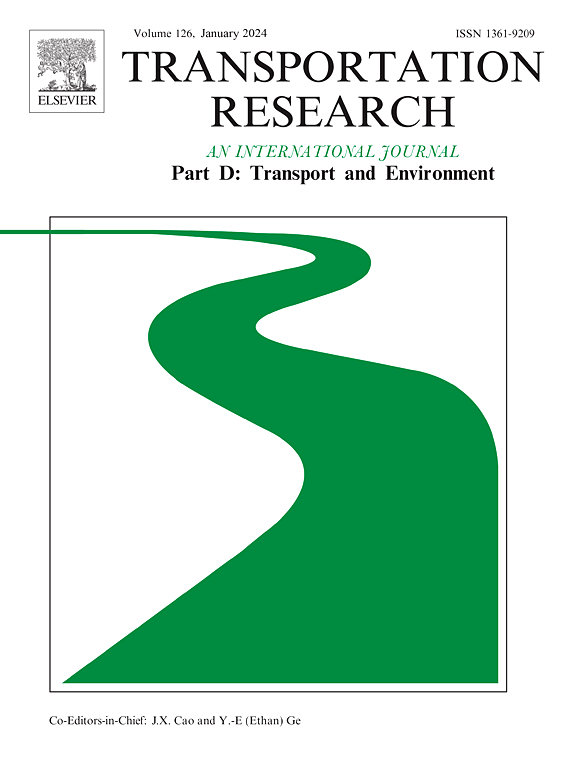交通对儿童活动范围的非线性影响:手机数据洞察
IF 7.7
1区 工程技术
Q1 ENVIRONMENTAL STUDIES
Transportation Research Part D-transport and Environment
Pub Date : 2025-05-05
DOI:10.1016/j.trd.2025.104774
引用次数: 0
摘要
公共交通可达性在塑造儿童的流动性方面发挥着关键作用,但由于在捕捉儿童的实际活动模式方面存在挑战,因此尚未得到充分开发。本研究采用匿名手机数据来解决这些差距。通过确定儿童手机用户的完整旅行活动,该研究检验了三种交通方式(即步行、公共汽车和地铁)与儿童在家庭和学校环境中不同层次的活动范围之间的非线性关系。结果表明,交通可达性的重要性随着儿童活动范围的扩大而增加,特别是在学校周围,道路密度起主导作用。虽然交通可达性对中度活动范围产生积极影响,但在广泛水平上出现负面关联。改善交通可达性最有利于来自低成本社区的儿童。研究结果确定了城市交通系统的有效阈值,为以儿童为中心的交通规划提供了可操作的见解,并强调了公平的公共交通和以学校为中心的规划战略的优先事项,以支持儿童的流动性和福祉。本文章由计算机程序翻译,如有差异,请以英文原文为准。
Nonlinear effects of transit on children’s activity range: Mobile phone data insights
Public transit accessibility plays a pivotal role in shaping children’s mobility, yet it remains underexplored due to challenges in capturing children’s actual activity patterns. This study adopts anonymized mobile phone data to address these gaps. By identifying complete travel activities among children mobile phone users, the study examines nonlinear relationships between three transit modes (i.e. walk, bus and metro) and children’s activity range across different levels within home and school contexts. Results show that transit accessibility’s importance increases as children’s activity range expands, particularly around schools, with road density playing a dominant role. While transit accessibility positively influences moderate activity ranges, negative associations emerge at extensive levels. Enhanced transit accessibility most benefits children from lower-cost neighborhoods. The findings identify effective thresholds for urban transportation systems, offering actionable insights for child-centered transport planning, and highlighting the priority of equitable public transit and school-focused planning strategies to support children’s mobility and well-being.
求助全文
通过发布文献求助,成功后即可免费获取论文全文。
去求助
来源期刊
CiteScore
14.40
自引率
9.20%
发文量
314
审稿时长
39 days
期刊介绍:
Transportation Research Part D: Transport and Environment focuses on original research exploring the environmental impacts of transportation, policy responses to these impacts, and their implications for transportation system design, planning, and management. The journal comprehensively covers the interaction between transportation and the environment, ranging from local effects on specific geographical areas to global implications such as natural resource depletion and atmospheric pollution.
We welcome research papers across all transportation modes, including maritime, air, and land transportation, assessing their environmental impacts broadly. Papers addressing both mobile aspects and transportation infrastructure are considered. The journal prioritizes empirical findings and policy responses of regulatory, planning, technical, or fiscal nature. Articles are policy-driven, accessible, and applicable to readers from diverse disciplines, emphasizing relevance and practicality. We encourage interdisciplinary submissions and welcome contributions from economically developing and advanced countries alike, reflecting our international orientation.

 求助内容:
求助内容: 应助结果提醒方式:
应助结果提醒方式:


